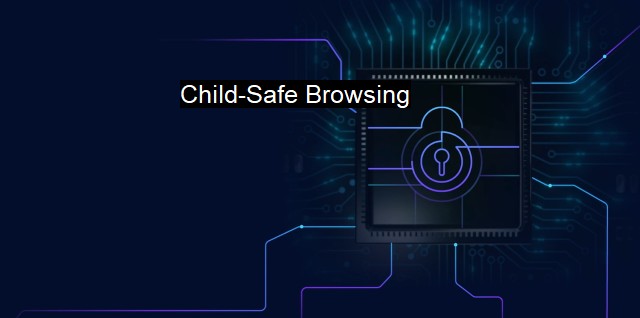What is Child-Safe Browsing?
Child-Safe Browsing: Key Tactics to Keep Children Safe Online
Child-safe browsing is an essential feature in today’s technologically-driven world where children have such easy access to the internet. It is a part of cybersecurity and antivirus measures specifically designed to protect kids from encountering age-inappropriate or harmful content when they surf the internet. These can range from pornography and violence to potentially dangerous avenues like chatting with strangers online.To understand child-safe browsing, it's pertinent to know the severity of threats to children online. The internet is a vast repository of knowledge offering many advantages. it also poses risks, like exposure to harmful content which not only includes explicit material but encompasses bullying, hacking activities, privacy breaches, and more. Much like the real world, the online landscape is a large, unfettered frontier that can pose a threat to children if there’s no software or service offering the necessary protection.
An excellent way of mitigating these internet-borne threats is through child-safe browsing programs that are nothing short of 'cyber bodyguards.' These programs, typically under the umbrella of parental control software or services, restrict access to predefined harmful sites, filter content based on age-appropriateness and even setting usage time limits. Children can then browse the internet without their innocence being subjected to the part of the internet filled with damaging and inappropriate content.
Cybersecurity, in this sense, extends not only to protect systems from exploits, like viruses, spyware, and ransomware but also to include safety provisions for the users, especially children. Hence, antivirus programs today come with features geared towards counting the potential online threats to children. Apart from virus and malware protection, many offer built-in content advisories, controls for blocking and allowing various websites, usage caps, and real-time alerts for parents.
This scope of protection, therefore, renders child-safe browsing to be a much-needed countermeasure to online threats faced by children. With these programs in place, parents can rest easy knowing online threats are quelled while cultivating healthy browsing habits for their children.
Child-safe browsing also benefits children and adolescents on an individual level. By providing them with a safe digital environment, children can harness the internet’s enormous educational potential and grow their knowledge without jeopardizing their wellbeing. Hence, establishing safe browsing habits from a young age inculcates a sense of responsible internet use that sticks with them in adulthood.
It's crucial to note that while technology, software, and various services are useful tools in maintaining child-safe browsing, they're not infallible. Encrypted websites or new websites that have yet to be categorized may hide adult content or risk material difficult to filter. Even antivirus programs may not keep up with every new threat developed.
To establish a truly effective child-safe browsing environment, parental guidance and education on safe online behavior should supplement these devices and software. Speak with your children about the potential threats they may encounter, teach them how to recognize these dangers, and nurture openness about their online activities.
Child-safe browsing is both a cybersecurity system and a shared responsibility. Antivirus and software services provide valuable protection, while parents offer guidance about wise internet use. While the rapidly evolving nature of the internet will present new challenges to protect young internet users, child-safe browsing offers a robust defense stance for their benefit, bringing peace of mind to the whole digital practice.
Child-safe browsing is an invaluable part of cybersecurity, providing what's effectively a layer of antivirus protection tailored for children who rely enormously on the internet. This combination of content filters, usage monitoring, capping, and real-time reporting ensures a safer digital ecosystem for children, fortifying them against cyber threats while allowing them to explore and learn in a safe environment.

Child-Safe Browsing FAQs
What is child-safe browsing?
Child-safe browsing is a practice that involves implementing measures to ensure that children do not come across inappropriate content or malicious websites while using the internet.What are some measures that can be taken to ensure child-safe browsing?
Some measures that can be taken to ensure child-safe browsing include using parental control software, setting up restricted user accounts, and educating children about online safety.Why is child-safe browsing important for cybersecurity?
Child-safe browsing is important for cybersecurity because children are often the most vulnerable targets for cybercriminals. By implementing measures to ensure that children are not exposed to malicious websites, parents can better protect their children from online threats.Are antivirus programs enough to ensure child-safe browsing?
Antivirus programs are an important part of ensuring child-safe browsing, but they are not enough on their own. It is also important for parents to educate their children about online safety and to use additional measures such as parental control software and restricted user accounts.| | A | | | B | | | C | | | D | | | E | | | F | | | G | | | H | | | I | | | J | | | K | | | L | | | M | |
| | N | | | O | | | P | | | Q | | | R | | | S | | | T | | | U | | | V | | | W | | | X | | | Y | | | Z | |
| | 1 | | | 2 | | | 3 | | | 4 | | | 7 | | | 8 | | |||||||